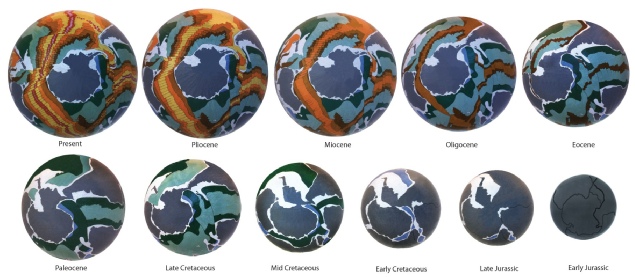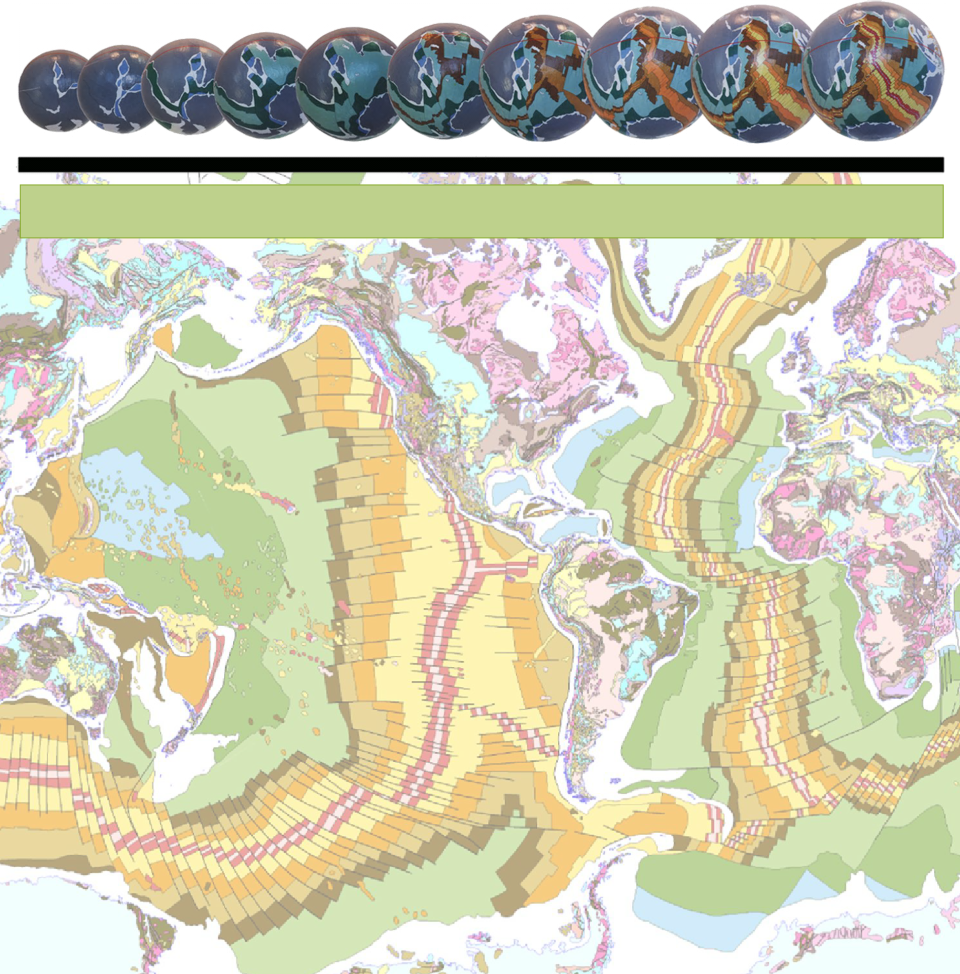SOUTHERN OCEAN
Opening of the Southern Ocean is a paradox on plate tectonic reconstructions and very little mention of this ocean is made in conventional literature. This paradox arises because there are no subduction zones available to absorb the extensive plate motion required to continue opening the ocean.

Southern Ocean Expansion Tectonic small Earth spreading history, extending from the present-day back to the early-Jurassic.
On Expansion Tectonic small Earth reconstructions, opening of the circum-polar Southern Ocean forms part of the extensive global network of mid-ocean spreading ridges. The opening and northward migration of the southern continents simply represents a natural consequence of the breakup of the Pangaea supercontinent and increase in surface areas of the Southern and adjoining ocean basins during an increase in Earth radius.
The Southern Ocean is located between the present Australian and East Antarctican continents. This ocean arbitrarily merges with the South Pacific and Indian Oceans to the east and west respectively. Rifting and opening of the Southern Ocean first commenced in conjunction with opening of the Atlantic and Indian Oceans during the late-Jurassic Period. Further opening then initiated final separation of Australia and Antarctica during the Paleocene, some 66 million years ago. Symmetric-style seafloor spreading in the Southern Ocean has since extended west, in conjunction with the eastern arm of the central Indian Ocean spreading ridge, and east to form an extension of the East Pacific spreading ridge.
Each of the Expansion Tectonic small Earth models shown above demonstrate that the Southern Ocean spreading ridge is intimately associated with the global network of ridges exposed within all of the modern oceans. No arbitrary disruption of the Southern Ocean mid-ocean-ridge network is required during subsequent opening. In addition, no pre-existing crust needs to be removed by subduction processes and arbitrary fragmentation of continental crust is also not required.
It is appropriate to also mention that the Southern Ocean mid-ocean-ridge has increased in length and has migrated north over time. What this simply means is that the Southern Ocean ridge was once the length of the perimeter of Antarctica, but has since moved away from the margin during opening of the Southern Ocean and is now much longer. This movement and increase in length is a simple reflection of the northward migration of adjoining continents during an increase in the surface area of the Earth over time.


